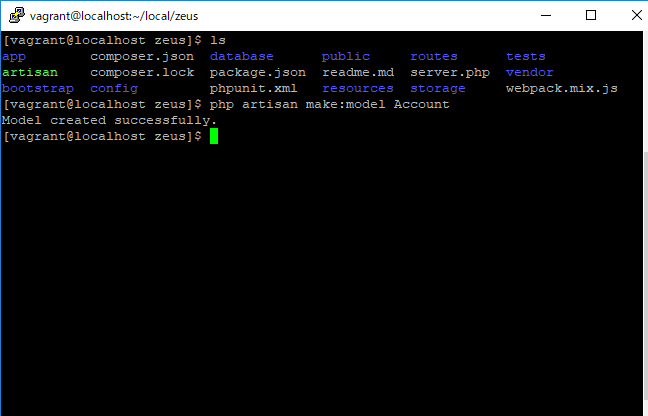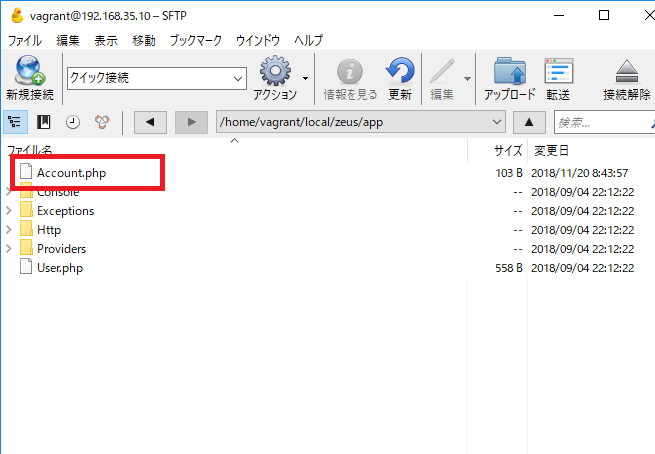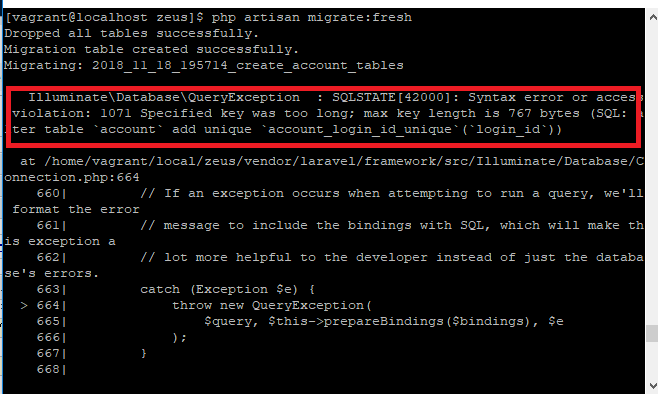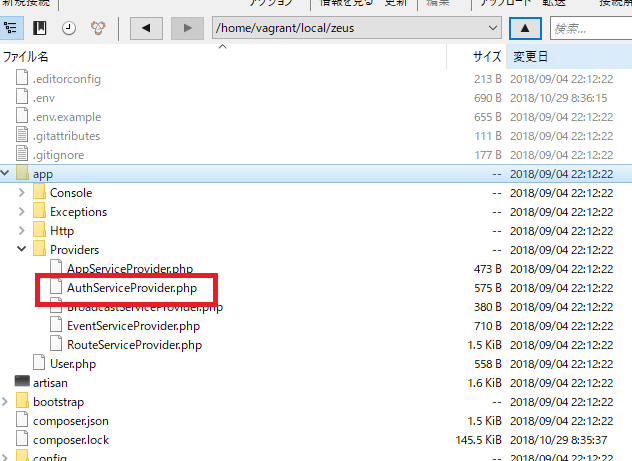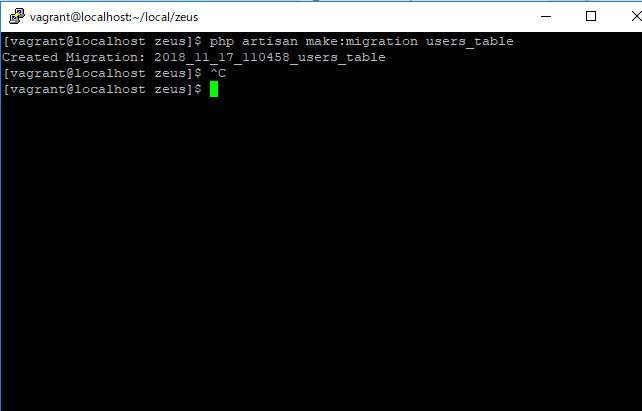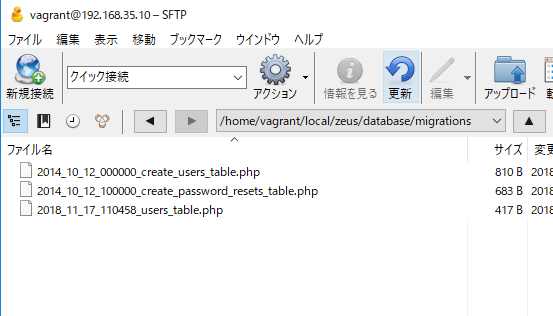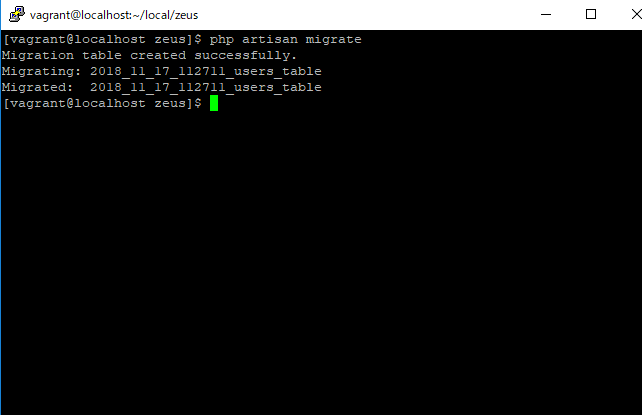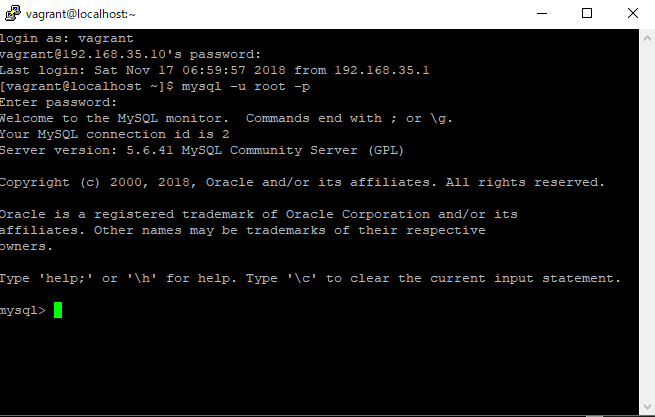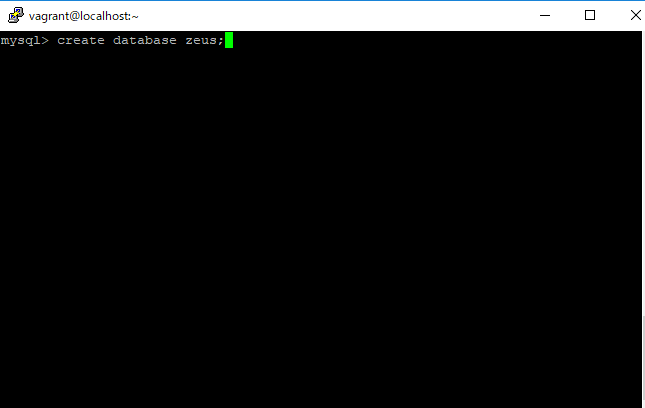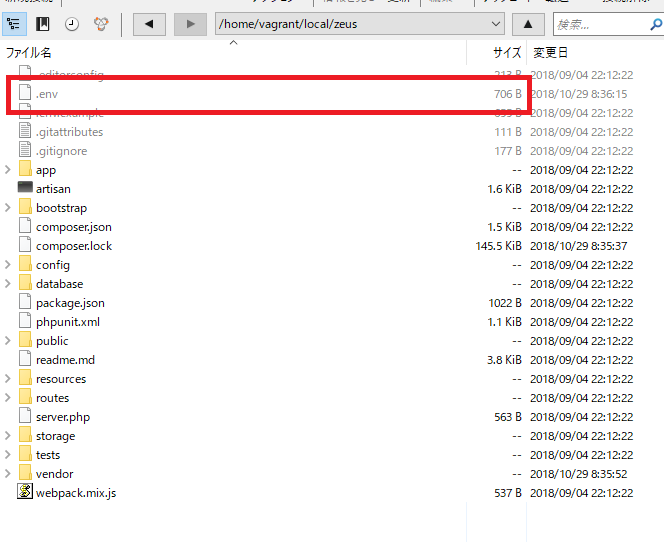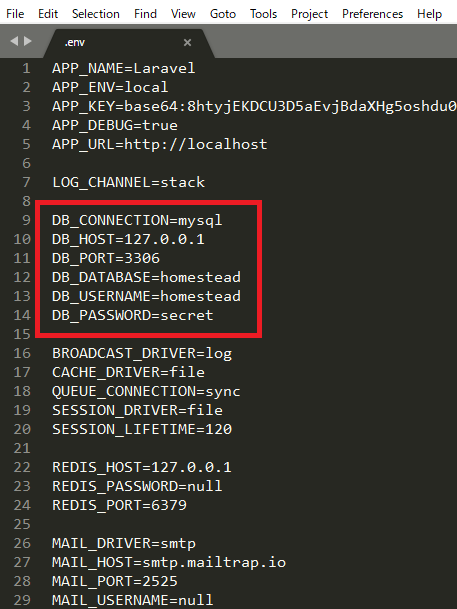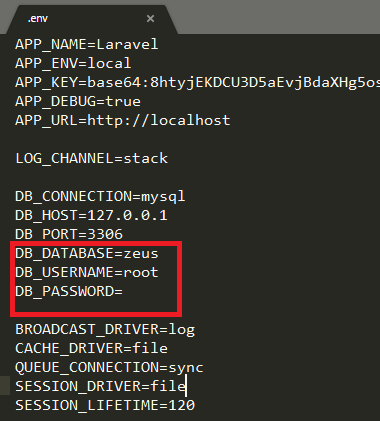コマンドラインでシーダーを実行しようとすると、Class ${class_name} does not existのエラーが出た時の対処法。
[vagrant@localhost zeus]$ php artisan db:seed
Seeding: AccountTableSeeder
ReflectionException : Class AccountTableSeeder does not exist
at /home/vagrant/local/zeus/vendor/laravel/framework/src/Illuminate/Container/Container.php:779
775| if ($concrete instanceof Closure) {
776| return $concrete($this, $this->getLastParameterOverride());
777| }
778|
> 779| $reflector = new ReflectionClass($concrete);
780|
781| // If the type is not instantiable, the developer is attempting to resolve
782| // an abstract type such as an Interface of Abstract Class and there is
783| // no binding registered for the abstractions so we need to bail out.
Exception trace:
1 ReflectionClass::__construct("AccountTableSeeder")
/home/vagrant/local/zeus/vendor/laravel/framework/src/Illuminate/Container/Container.php:779
2 Illuminate\Container\Container::build("AccountTableSeeder")
/home/vagrant/local/zeus/vendor/laravel/framework/src/Illuminate/Container/Container.php:658
Please use the argument -v to see more details.
1.DatabaseSeeder.phpと読み込むclassが存在するか確認する
use Illuminate\Database\Seeder;
class DatabaseSeeder extends Seeder
{
/**
* Seed the application's database.
*
* @return void
*/
public function run()
{
$this->call([
AccountTableSeeder::class,
]);
}
}
use Illuminate\Database\Seeder;
class AccountTableSeeder extends Seeder
{
/**
* Run the database seeds.
*
* @return void
*/
public function run()
{
//
DB::table('account')->insert([
'login_id' => str_random(10),
'company_id' => '001',
]);
//
}
}
問題ない。何故だ?

composer dump-autoload で直る
コマンドラインでたたきます。
[vagrant@localhost zeus]$ php composer.phar dump-autoload Generating optimized autoload files > Illuminate\Foundation\ComposerScripts::postAutoloadDump > @php artisan package:discover Discovered Package: beyondcode/laravel-dump-server Discovered Package: fideloper/proxy Discovered Package: laravel/tinker Discovered Package: nesbot/carbon Discovered Package: nunomaduro/collision Package manifest generated successfully.
改めてphp artisan db:seedとすると、今度は上手くいくのがわかります。
[vagrant@localhost zeus]$ php artisan db:seed Seeding: AccountTableSeeder Database seeding completed successfully.
Good Job!




